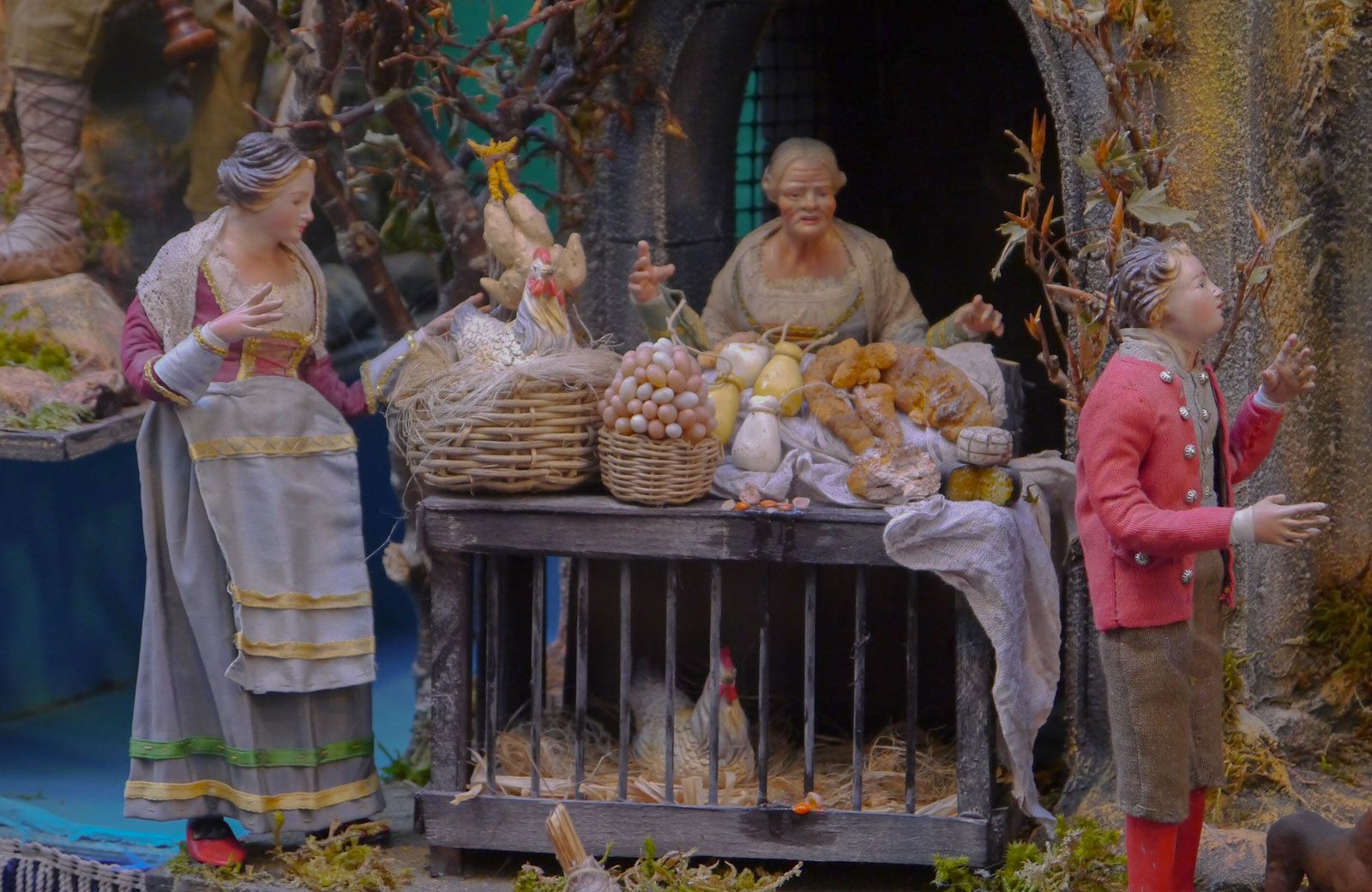The characters of the Neapolitan Nativity Scene have an important symbolic value: they sometimes refer to pagan cults prior to Christianity, cults that have deep roots, or they symbolize the virtues and principles of the Christian faith.
Those that cannot be missed in the Neapolitan Nativity scene are these:
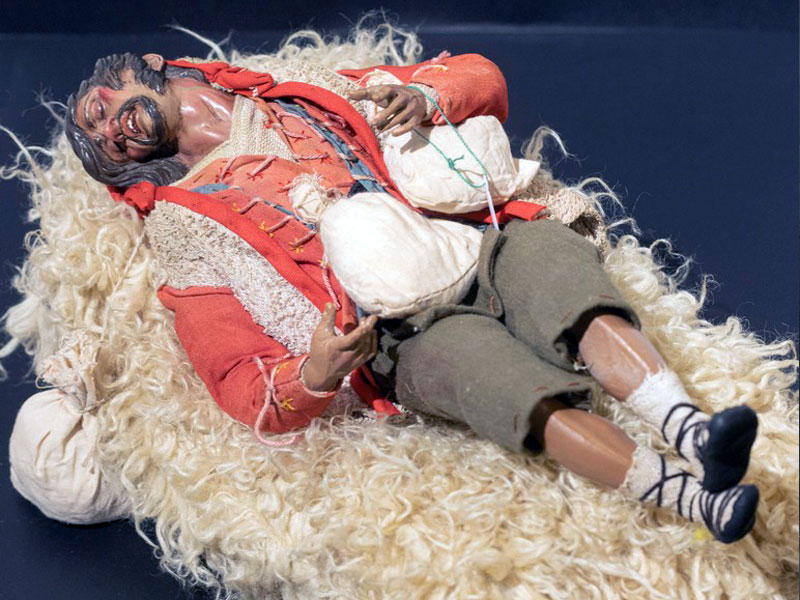
Benino
Benino is the sleeping shepherd boy. According to some legends, the Nativity scene was born from his dream and would cease to exist the moment he woke up. This character symbolizes the wait for Christmas, the path that every man takes towards this miraculous event. Also known as the "shepherd of wonder" he is usually positioned under a haystack
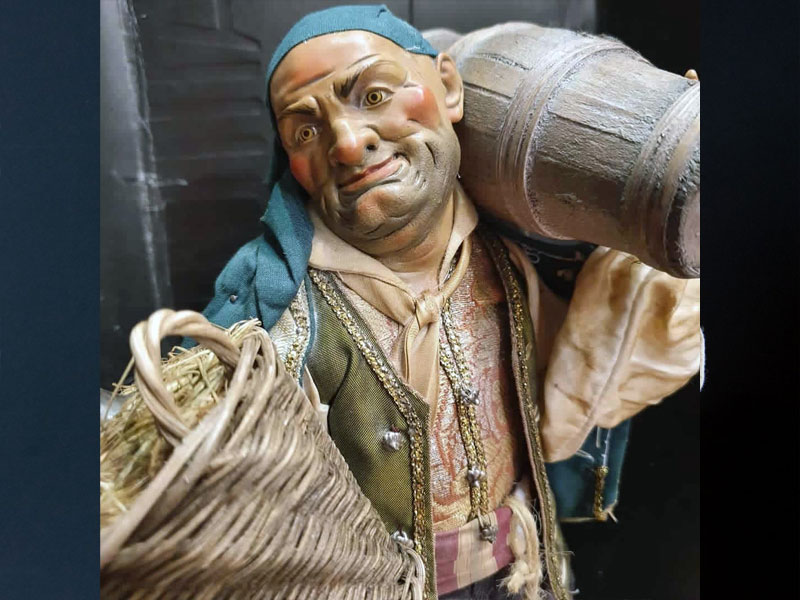
The wine seller
The wine seller, or "Oste", symbolizes the Eucharist, and is part of the group of food seller characters, who allegorically represent the twelve months of the year: January: butcher or butcher; February: ricotta and cheese seller; March: chicken seller and seller of other birds; April: egg seller; May: married couple with basket of cherries and fruit; June: baker; July: tomato seller; August: watermelon seller; September: fig seller or sower; October: vintner or hunter; November: chestnut seller; December: fishmonger or fisherman.
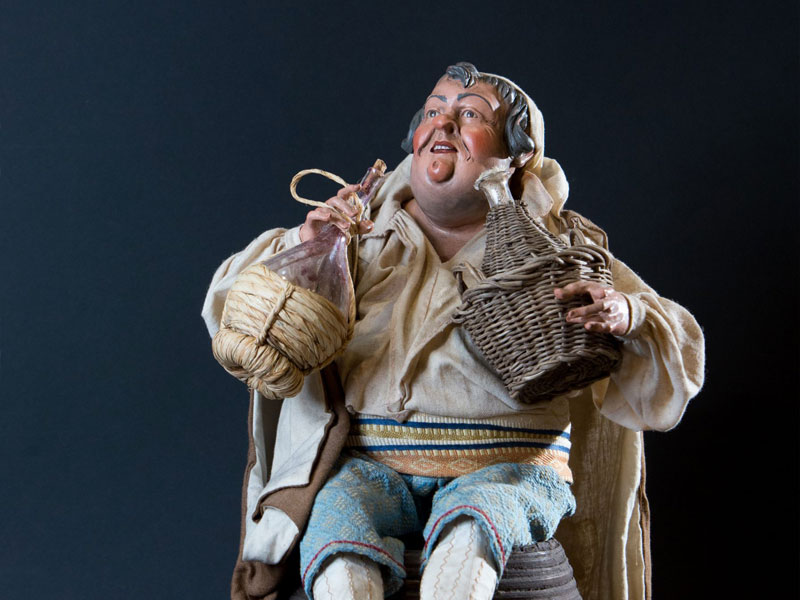
Ciccibacco
This funny character is placed in one of the two caves located on the sides of the Nativity. He carries an ox cart and carries barrels of wine. he represents the personification of the pagan god Bacchus. He has a ruddy appearance and a prominent belly. Generally he is accompanied by pipers and flute players, thus recalling the Dionysian rites of antiquity. Ciccibacco, in some way, reminds us how thin the boundary is between sacred and profane.
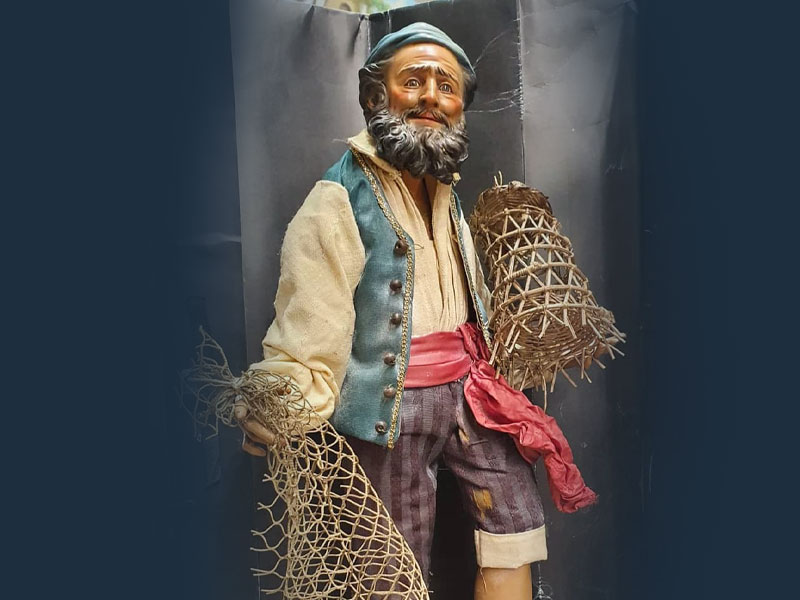
The fisherman
He is represented with his shirt open on the chest, which represents the people, and his trousers rolled up below the knee, as if he were about to enter the water. Sometimes he carries the fishing rod, sometimes not, but he always has his fish counter, another of the characteristic figures of the Neapolitan nativity scene. He represents life, but also the lower hell, Hades, as opposed to the upper celestial world embodied by the Hunter. But the Fisherman also recalls Saint Peter, the 'fisherman of souls', and in general the symbolism of the fish used at the time of the persecution of Christians to indicate Jesus.
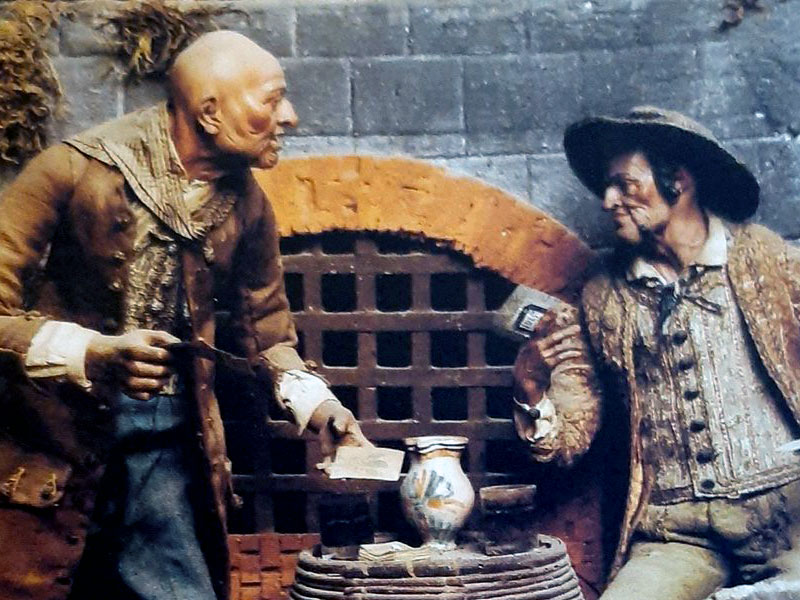
The two companions
the two companions, zi' Vicenenzo and zi' Pascale, drinking and chatting companions, have the appearance of two cheerful and carefree friends. In reality they are the personification of Carnival and Death. In the Fontanelle cemetery in Naples there was a skull called “A Capa 'e zi 'Pascale” to which prophetic powers were attributed, and people asked it for advice on numbers to play in the lottery.
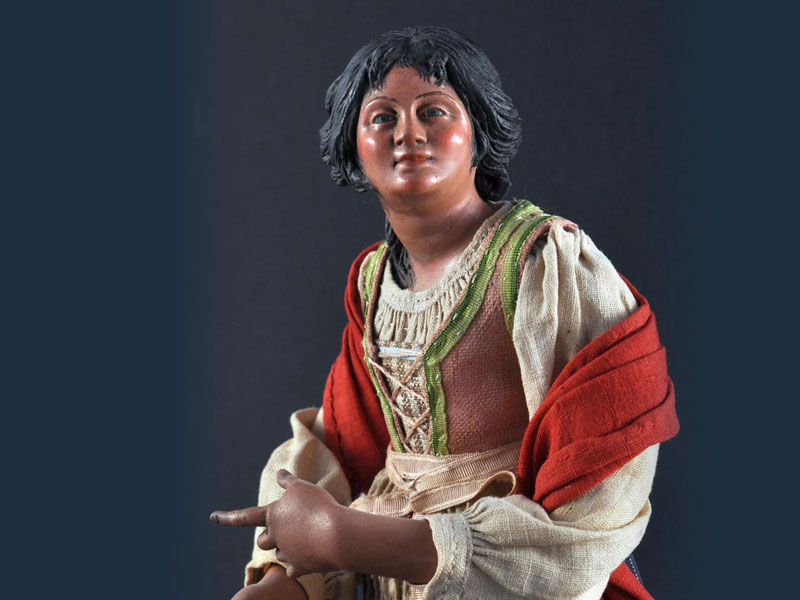
The gypsy
The gypsy, traditionally, is able to predict the future. There are various interpretations of this figure. A legend has it that, having predicted the birth of Jesus and having committed the sin of presumption, she was transformed into an owl. The gypsy with the child in her arms symbolizes the prophecy of the flight into Egypt while without the child she recalls the passion of Christ and the desperation of the Madonna. It is believed that she is heir to the figure of the Cumaean Sibyl.
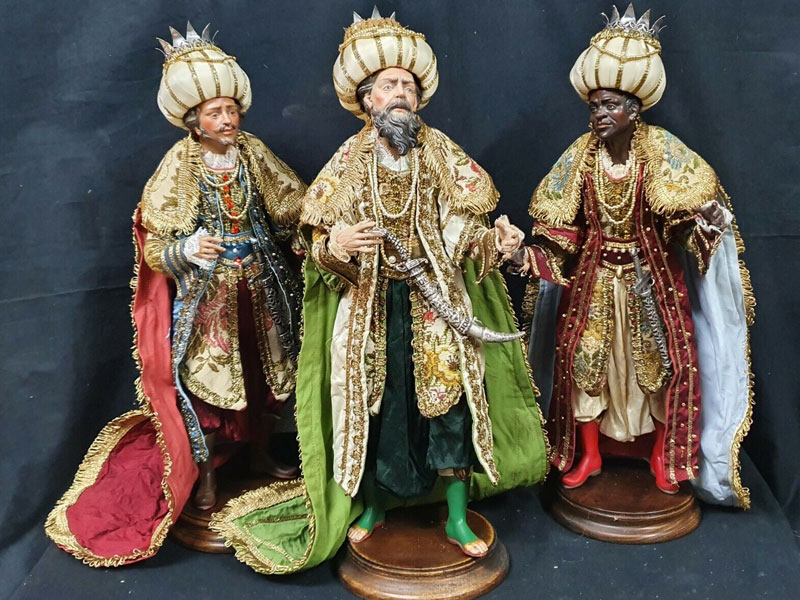
The Three Wise Men
According to Christian tradition they moved from the east, the starting point of the sun. They were originally represented on the back of three different animals, the horse, the dromedary and the elephant which symbolized Europe, Africa and Asia. Currently, figurines depict them riding camels. They were wise men with royal and priestly powers. The Gospel does not speak of their number, which tradition has set at three, based on their gifts, gold, incense, myrrh, which was then assigned a symbolic meaning.

